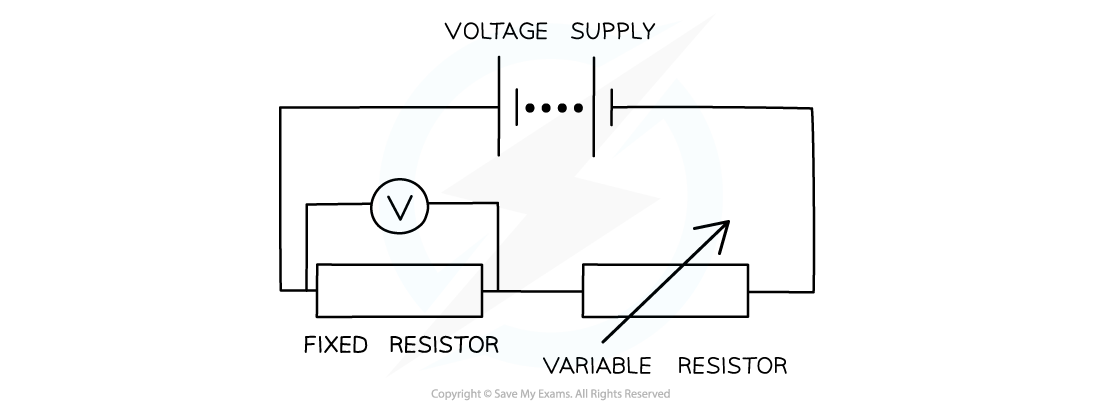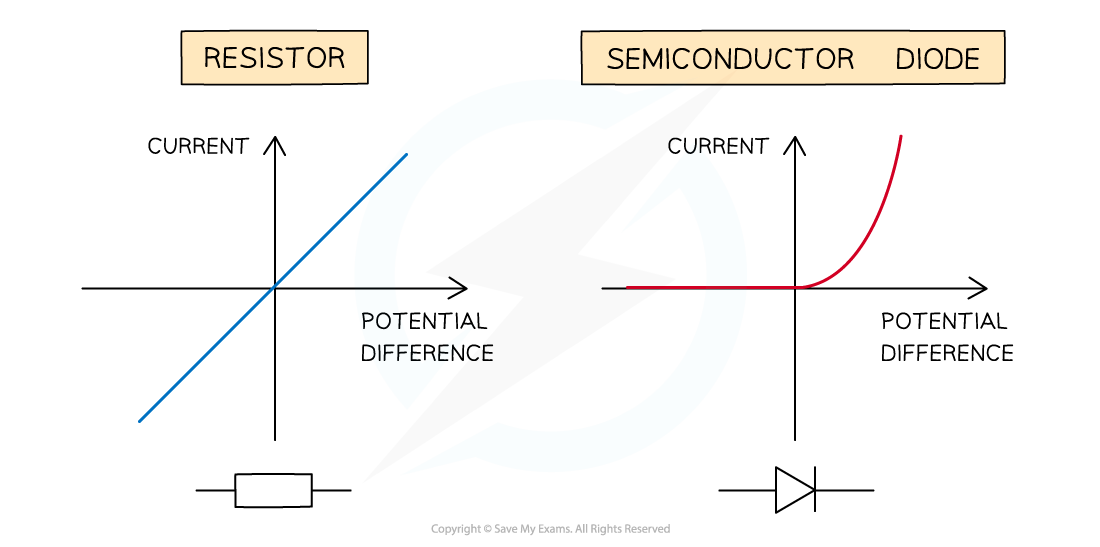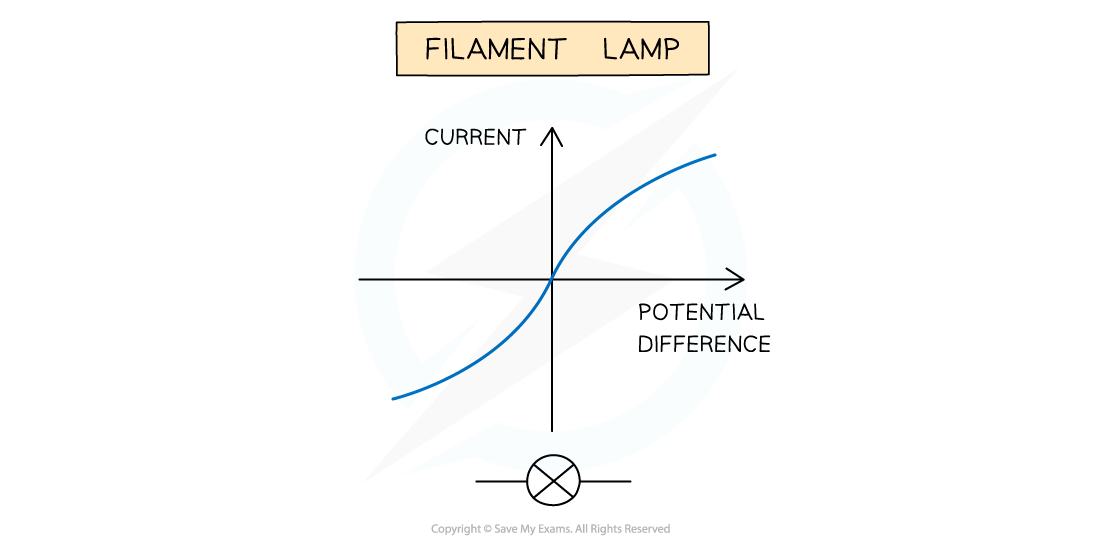Current–Voltage Characteristics (AQA A Level Physics): Revision Note
Exam code: 7408
Ohm's Law
Ohm’s law states:
For a conductor at a constant temperature, the current through it is proportional to the potential difference across it
Constant temperature implies constant resistance
Ohm's law is represented in the equation below:

The relation between potential difference across an electrical component (in this case, a fixed resistor) and the current can be investigated through a circuit such as the one below

Circuit for plotting graphs of current against voltage
By adjusting the resistance on the variable resistor, the current and potential difference will vary in the circuit
Measuring the variation of current with potential difference through the fixed resistor will produce a straight line graph, such as the one below

Circuit for plotting graphs of current against voltage
Since the gradient is constant, the resistance R of the resistor can be calculated by using 1 ÷ gradient of the graph
An electrical component obeys Ohm’s law if its graph of current against potential difference is a straight line through the origin
A resistor does obey Ohm’s law
A filament lamp does not obey Ohm’s law
This applies to any metal wires, provided that the current isn’t large enough to increase their temperature
Worked Example
The current flowing through a component varies with the potential difference V across it as shown.

Which graph best represents how the resistance R varies with V?


Examiner Tips and Tricks
In maths, the gradient is the slope of the graph
The graphs below show a summary of how the slope of the graph represents the gradient

I–V Characteristics
As the potential difference (voltage) across a component is increased, the current also increases (by Ohm’s law)
The precise relationship between voltage and current is different for different components and can be shown on an I-V graph
For an ohmic conductor, the I–V graph is a straight line through the origin
For a semiconductor diode, the I–V graph is a horizontal line that goes sharply upwards
For a filament lamp, the I–V graph has an 'S' shaped curve


I–V characteristics for an ohmic conductor (e.g. resistor), semiconductor diode and filament lamp
Ohmic Conductor
The I–V graph for an ohmic conductor at constant temperature e.g. a resistor is very simple:
The current is directly proportional to the potential difference
This is demonstrated by the straight-line graph through the origin
Semiconductor Diode
The I–V graph for a semiconductor diode is slightly different. A diode is used in a circuit to allow current to flow only in a specific direction:
When the current is in the direction of the arrowhead symbol, this is forward bias. This is shown by the sharp increase in potential difference and current on the right side of the graph
When the diode is switched around, it does not conduct and is called reverse bias. This is shown by a zero reading of current or potential difference on the left side of the graph
Filament Lamp
The I–V graph for a filament lamp shows the current increasing at a proportionally slower rate than the potential difference
This is because:
As the current increases, the temperature of the filament in the lamp increases
Since the filament is a metal, the higher temperature causes an increase in resistance
Resistance opposes the current, causing the current to increase at a slower rate
Where the graph is a straight line, the resistance is constant
The resistance increases as the graph curves
The filament lamp obeys Ohm's Law for small voltages
Worked Example
The I–V characteristic of two electrical component X and Y are shown.

Which statement is correct?
A. The resistance of X increases as the current increases
B. At 2 V, the resistance of X is half the resistance of Y
C. Y is a semiconductor diode and X is a resistor
D. X is a resistor and Y is a filament lamp
Answer: C
The I–V graph X is linear
This means the graph has a constant gradient. I/V and the resistance is therefore also constant (since gradient = 1/R)
This is the I–V graph for a conductor at constant temperature e.g. a resistor
The I–V graph Y starts with zero gradient and then the gradient increases rapidly
This means it has infinite resistance at the start which then decreases rapidly
This is characteristic of a device that only has current in one direction e.g a semiconductor diode
Therefore, the answer is C
Examiner Tips and Tricks
Make sure you're confident in drawing the I–V characteristics for different components, as you may be asked to sketch these from memory in exam questions

You've read 0 of your 5 free revision notes this week
Unlock more, it's free!
Did this page help you?